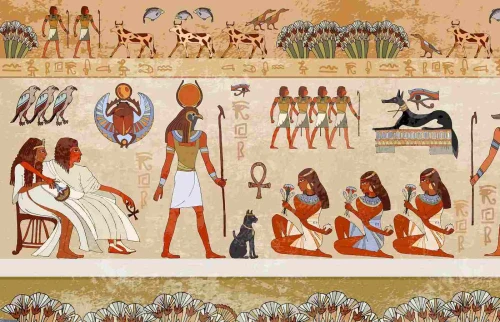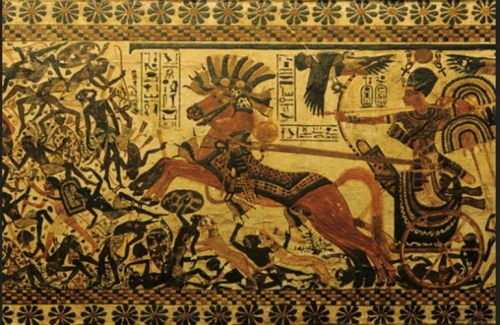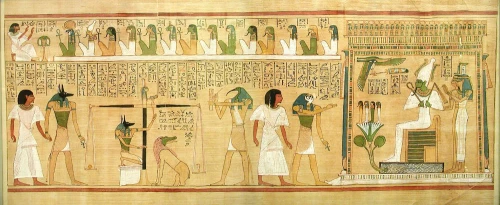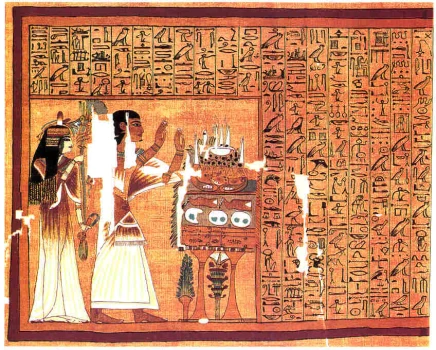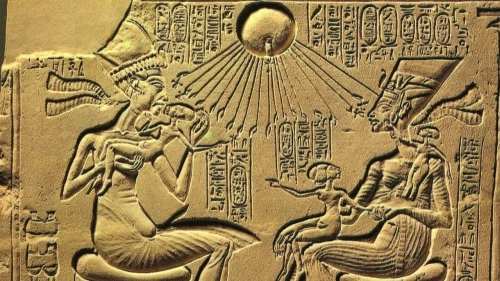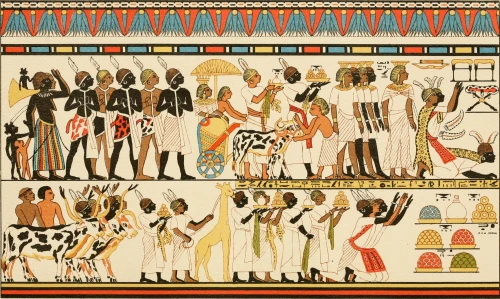
The ancient Egyptians were polytheists, and Throughout history, hundreds of gods and goddesses were worshiped. The Egyptian gods and goddesses were the personification of natural elements, life events, and feelings, All these elements are found in the hieroglyphics on the walls of the temples, Therefore if you are interested in Egyptian gods, I suggest checking out our Egypt day tours to discover the history of Egyptian pharaohs. Thus, the Egyptian pantheon was one of the most imposing in all history, with more than seven hundred deities.
The Ancient Egyptians worshiped many deities
Amon
Place of worship:
Amon is considered one of the most important Egyptian gods.The Karnak temple that is included in our Luxor Day tours is The largest temple of Amun. His priests rivaled the pharaoh in power. Its construction started during the XII Dynasty. It has several rows of statues of rams in honor of Amun. you can use your time and book your place on luxor west bank day tour, because we will take you through a time machine and travel to the era of ancient pharaohs, it will be an unforgettable Egypt tours.
Description:
Amon could appear with a human face or a ram's head with large horns. Amun's symbols are often the sun disk or the ram's horns.
It is associated with the Goose and the ram (sacred animal). All this amazing historical information will be more clear during your Egypt travel packages.
Biography:
Amun used to be the native deity of the Theban tribes. Amun was revered as the father of the gods and elevated to the status of a universal deity after the Bans took the Egyptian monarchy. Despite being at the very centre of the world, his name means "Hidden" or "Invisible" since he was intended to be unseen. Amun created the other gods after creating himself, according to tradition, so that the universe could exist. If you want to learn more about the sound and light spectacle that teaches ancient Pharaonic history and Egyptian mythology, don't wait to book our exclusive East bank of luxor half-day trip.
Apis
Place of worship:
In Memphis, since the First Dynasty. Then By the New Kingdom period, in the Serapeum of Saqqara, the remains of The sacred bulls were buried. What do you think of taking a day tour to giza pyramids, sakkara and memphis from cairo?
Description:
He is represented by a black bull crowned with a solar disc representing the creative energy of nature. It could be found with uraeus and certain peculiarities, such as a crescent on the forehead or a vulture on the back. Apis is never depicted with a human body.
Biography:
Apis was the sacred bull believed to be a reincarnation of Osiris. The bull Apis was a fertility god, and his cult is thought to have originated in Heliopolis, possibly founded by King Menes. Apis was associated with Ptah and Osiris. It was widely venerated during the New Kingdom, and during the Late Intermediate Period, the Apis bull was black. He must have exhibited particular signs in specific places on the body. The new bull dwelt in Memphis city, where he was honored as a god. The cult of Apis continued throughout the Ptolemaic period and spread to Athens and Rome.
Bes
Place of worship:
In homes throughout ancient Egyptian history, they became household protectors who fought evil spirits.
Description:
It looks like a Bearded gnome with a broad, cheerful face, coarse features, lion's tail, and ears. He is usually depicted in full face, unlike many Egyptian deities represented in profile. He often wore a feather headdress and wore panther skin.The name of the god Bes was mentioned in the Dendera Temple, which is located in Qena Governorate, so look at our Egypt Luxury tours to discover more secrets about it.
Biography:
Despite his deceptive appearance, he was a benevolent god whose role was to ward off evil spirits by frightening them.
Geb
Place of worship:
Heliopolis, Temple of Coptos.
Description:
Geb is usually depicted lying on his back, often wearing the crown of Lower Egypt.
In his representations, he was found in the company of Nut, the goddess of the sky. In general, his skin was green. The Goose, present in his hieroglyph, was his representative animal. Often he appears on the sarcophagi with Nut while the god of the air, Shu, comes to interrupt their embrace. When you book your place in our Egypt Classic tours you will discover the importance of the god Geb Because it is considered a symbol of fertility and goodness in Egyptian mythology. it was mentioned in the temple of the god Amun, so do not miss the opportunity to book your Egypt Cultural tours.
Biography:
Geb (Egyptian god of the earth) is the husband and brother of the sky goddess Nut. From this union, they had two sons, Osiris and Seth, and two daughters, Isis and Nephthys. According to legend, Geb, eager to succeed his father on the throne of Egypt, stole the uraeus, a pledge of the pharaoh's power. Wanting to show that he could govern, he failed by being injured by the cobra uraeus.
Herychef (Harsaphes)
Place of worship:
The ancient Egyptian city of nen-nswt was known as Herakleopolis in Greek. The meaning of this name was "the castle of the royal infant." the existing
Ihnasya el-Medina is the name of this ancient city.
Description:
He was typically shown as a man wearing an Atef crown, to which a few uraei with a ram's head might be added. Nonetheless, it was possible to spot him wearing a type of pschent, the double height, such as at the Hibis Temple in Kharga.
Biography:
Hérychef, or "he who is on his lake," signified, by his name alone, his connection with the primordial waters, where it all began; this was the reason why he was considered a fertility deity. Locally, in Herakleopolis, he was known as a creator god, a demiurge. His cult grew during the 9th and 10th Dynasties and became assimilated into royalty. Indeed, at this time, the Herakleopolitan princes succeeded in having themselves crowned pharaohs, participating in the ascension of this god.
Anyway, the Egyptian gods have a great and amazing history, so I recommend you to choose your Egypt sightseeing tours in order to travel with us through time to the era of the Pharaohs.
 English
English
 Spain
Spain

